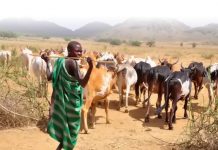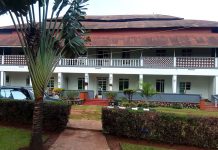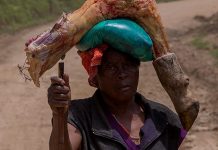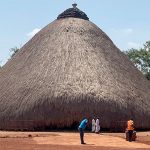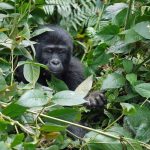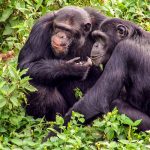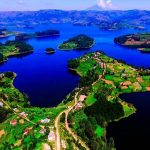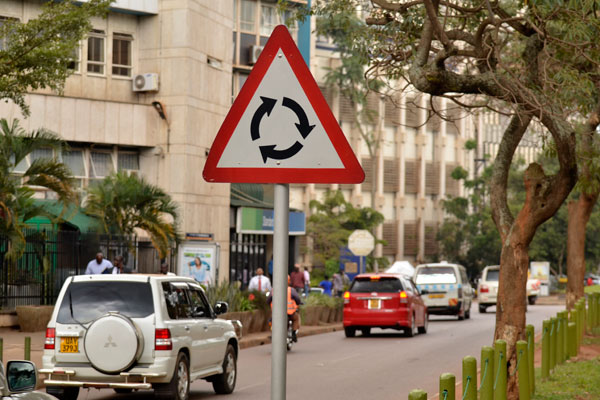Moons and moons ago, a group of grey-bearded old men chose a tree-shade as a meeting point. The spot, also covered in grass, was where these elders brainstormed about the issues of their different communities. Little did they know that 700 years later, this spot would birth a whole kingdom.
It Begins
This is to first draw your attention to Bulange. It is not an English word, no Sir! Not that it needs an explanation, not in Uganda. Bulange is a word synonymous with power, call it the axis of Uganda’s most powerful Kingdom; Buganda. Traditionalists will call Bulange the seat of power, where all matters the Buganda Kingdom, are decided. Did you know however that Bulange, a place looming with spacious structures was once just a tree?
Oh yes! 700 years ago, it is believed that grey-bearded men gathered under this tree shade to discuss issues of Buganda. Specifically, they talked about issues like health, wealth, and general standards of living. Whilst brainstorming, they would unconsciously weave strands of grass, which in Luganda (language spoken) translates into kulanga. And somehow, Kulaga would morph into Bulange, modern-day Buganda Kingdom headquarters, and home of the kingdom parliament, also known as the Lukiko.
The Story Continues
Though rich, the Buganda history, according to John Ssempebwa, deputy CEO of the Uganda Tourism Board (UTB), has been watered down. “Our history has been passed on in oral literature by the fireside,” he begins. “Consequently the narrative always takes twists and turns to suit the times and a particularly given audience.” However, the facts remain that the Baganda have always had a common ancestry and that it was the Bulange-kind-of-Lukiko (parliament) that impressed Arab traders, explorers, and missionary centuries ago.
“The first leader was Kintu, in the 1850s,” Ssempebwa merrily delves into the path that birthed the Buganda Kingdom. “He fell head-over-heels in love with Nambi, a young lady who hailed from the Ngeye clan.” He goes on, “Before him, people lived in what is Buganda today but were not united by a political entity. They were split in clan groups.”
Since they all spoke Luganda, it was easy to bring the clan heads (Bataka) together, it was easy to debate. “The pioneer clans were five, comprising of Ffumbe, Lugave, Ngeye, Nnyonyi nyange, and Njaza,” he lists. “Once in a while, one of the Bataka would emerge as the dominant leader.” In fact, legend holds that these fights for leadership were how the first king of Buganda rose to the throw.
It is believed that Kintu defeated and chased away Bemba, and soon word of his military prowess would spread across the clans. To avow his position, Kintu inherited Bemba’s homestead which was located in Nagalabi. “And since then, every Kabaka (king) has to symbolically be enthroned there,” Ssempebwa, tells of Ssemagulu Museum based in Mutundwe, an outskirts of Kampala City.
Decisions… decisions
A chat with Abdu Ssemanda would indeed confirm that it was the Bembe/Kintu battle that caused a change in the status quo. That a meeting was held by the Bataka, and the sole purpose was to find a way forward. “The venue was Magonga in Busunju County on Nnono Hill,” he narrates. “Kabaka Kintu had brought a new governance system where the Bataka shared responsibilities with him. There he appointed the first cabinet with the pioneer Katikiro being Kakulukuku from the Lugave clan.”
One look at the post-Bemba Buganda Lukiko, Ssemanda agrees that Kintu was more progressive, as he boosted the number of pioneer clans from five to more than 50. Ssemanada believes that Kintu paved a way for growth that would see his predecessors thrive and Buganda grow even bigger. But see, it was not just numbered, it had to be structured too, mostly defined by the exposure the kings had. “The Bulange where we are standing today was the idea of Kabaka Muteesa II who saw a similar building in Ireland,” Ssemanda states. “He asked why Buganda cannot have a similar structure for the Lukiko, in 1953, the idea was born.”
So in 1954, Bulange stood tall and proud; an architectural splendor, put together by Kob and Power architects and constructed by Singh and Brothers. “The tiles were imported from Belgium and the timber came from within Buganda and Congo. By then Buganda had 18 masazas (counties,) the local government had 25 ministers and 52 clans.” These he maintains, were all handpicked by the Kabaka. Buganda was a force to reckon with and would soon be seen as a threat by the Ugandan government.
Indeed, the post-Independence Prime Minister, Dr. Apollo Milton Obote I, would soon abolished kingdoms and Kabaka Sir Edward Muteesa II had to run into exile. Bashir Muwonge, an authority at the kingdom, says that upon chasing the king to exile, the Obote regime renamed the Lukiko, Republic House. It was then made to serve as the headquarters of the army. “Even after Idi Amin Dada toppled Obote, the Lukiko continued serving the same purpose,” recalls Muwonge. “In fact, began expanding it to contain the armed forces but left this expansion incomplete.” This expansion would only be completed upon the re-establishment of kingdoms, it was! Today the Lukiko is up and running.
Abdu Ssemanda interjects, he says that the Lukiko continues to be very relevant in the issues concerning Buganda. This role he says, mostly became clearer when Kabaka Ronald Mutebi was enthroned in July of 1993. “After the grand ceremony in Nagalabi, Buganda started demanding for the return of Ebyaffe (Buganda kingdom property) among which was the Bulange,” says Ssemanda. “Today, it is the place where the Namulondo(throne) is placed when the Kabaka is in attendance. There is a door reserved for the Kabaka and the Bataka strictly. Ordinary mortals use another one.”
The Bulange today
Take a casual glance at the Bulange today. Spectacular, right? It certainly is an archetype of elegance and class exuded by the kingdom’s ancestors. The walls, an artistic showcase of the totems of some clans. A walkway meant for royalty, guided by the red carpet, effortlessly blending into the shimmery seats, made from fine timber.
Woven within this elegance is a clear agenda: the Lukiko exists to addresses cultural and livelihood issues. It tries to steer clear of political issues, save for the occasional jab, the Katikiro (prime minister), Charles Peter Mayiga, will throw at the government for oppressing the Buganda subjects.
Eliminating poverty is a big deal. Programs to encourage coffee and food crop planting, or generally commercial Agriculture, are on. In that same bowel is the campaign by the Lukiko to have landowners registering their land to avoid illicit grabbers.
No wonder this kingdom remains afloat at a time when foreign cultures and languages are threatening the African culture. Bashir Muwonge is quick to list the ways in which the kingdom has remained relevant. He says that besides the projects, the subjects are encouraged to speak their language and also carry on traditions. “We have Okwanjula (traditional wedding), our Oluwombo cuisine (stews steamed in banana leaves) is popular even among traveled Baganda and none Baganda,” he boasts. “Any wonder that the tunic is soon becoming a national frock.”

